I am currently working at Kintore farm, based in Carew, 18 miles south of Ashburton in Canterbury.
Kintore Farm Ltd. owns 1,500 spring-calving, kiwi-cross cows, split between two farms which are across the road from each other. One unit has 700 cows and the other has 800 cows.
I work on the 700-cow herd farm named Katoa, where the cows are milked through a 60-unit Waikato rotary.
The parlour has automatic drafting, auto teat sprayers and cluster removers, along with a heat detection camera.
The feeding system in the parlour can deliver two different feeds, along with molasses at the same time.
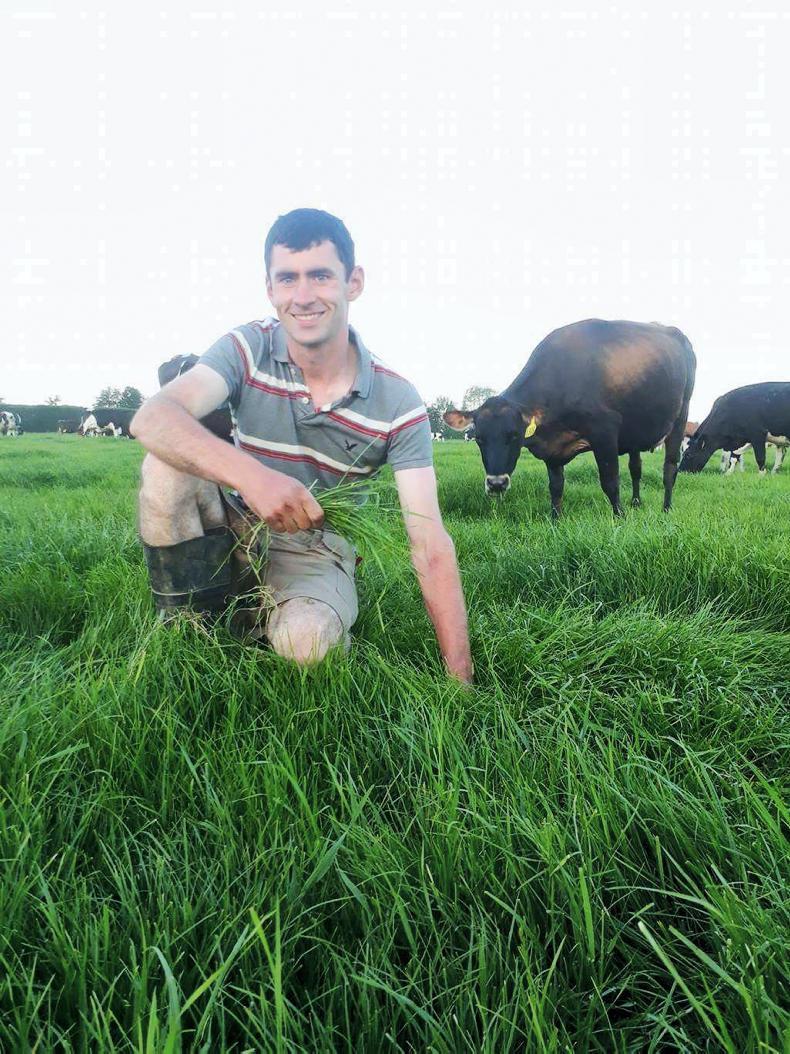
Stephen O'Keefe Stephen O’Keeffe
Staff
There are three full-time staff members working at Katoa, along with a student for the calving period.
Specialised calf-rearers are contracted in to feed calves from birth to weaning.
A local person is also contracted in to do the fertiliser and other tractor work using Kintore’s machinery when required, so as to free up time for the staff to focus on looking after the cows.
Farm statistics
The farm is 212ha in size, with 10ha sown with fodder beet.
The beet is used as a supplementary feed close to drying off in the winter and as a winter forage. The farm operates at a stocking rate of 3.46 cows/ha.
The herd produced 5,120 litres, with fat at 5.17% and protein of 3.96% – a total of 526kg of milk solids per cow last season from 700kg of supplementary feed in the form of wheat, palm kernel extract, peas, molasses, maize silage and fodder beet.
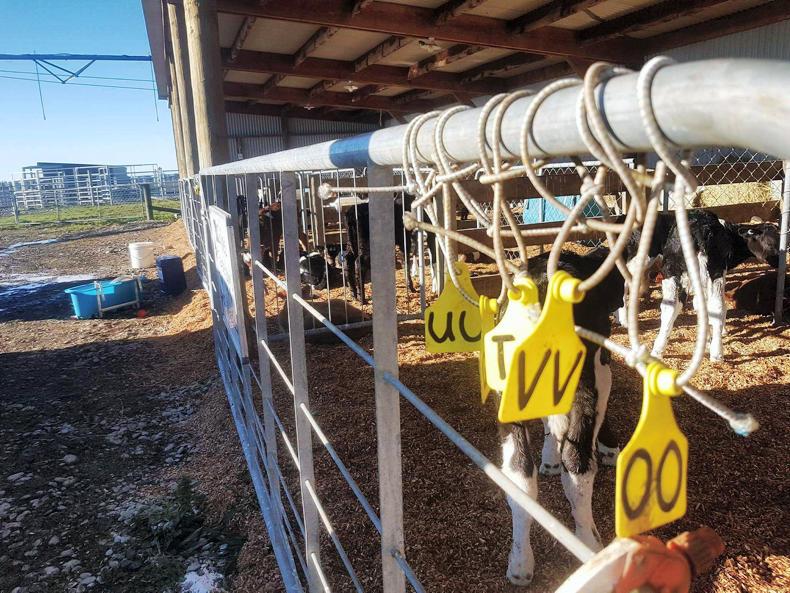
Cows and young stock are wintered on a dairy support block. This land block was purchased recently in conjunction with a few other local farmers.
Cows and replacements are wintered here on a diet of beet or kale, with grass and oat silage also available.
Allocations of the crops are done using a drone that measures the area of crop, and using crop analysis an accurate break size is calculated to ensure the right amount of beet is fed daily.
Heifer calves
Heifer calves leave the milking platform after weaning and go to the dairy support block, where they will remain until two weeks prior to calving.
There is a farmer employed between the various shareowners of the support block and he manages the heifers until they leave the farm.
Second-lactation and any cows at risk of getting metabolic disorders are wintered on kale.
The thinking behind this is that cows lose teeth between two and three years of age, and eating beet can cause problems to the gums and emerging teeth, potentially restricting dry matter intakes.
During calving everyone was rostered onto a six-one roster, where you worked six days and had one off to recharge the batteries.
Near the end of calving we resumed our normal roster of seven-two-seven-three, where you work for seven days and get either two or three days off.
Day-to-day
A normal day starts at 4.15am, with cups on at 4.45am and 1.45pm, with two hours taken off for lunch between milkings.
Most days we aim to be heading home by 4.30pm every evening, while we take turns in shifting cows to a new break of grass in the evening, if it’s required.
Is the New Zealand industry different from Ireland?
After flying over the snow-covered Southern Alps at the end of June, we weren’t too sure what to expect on arrival.
Just before arrival at Christchurch we got a glimpse of what New Zealand was all about – big square paddocks and even a few milking platforms in the shape of circles and a milking parlour in the centre.
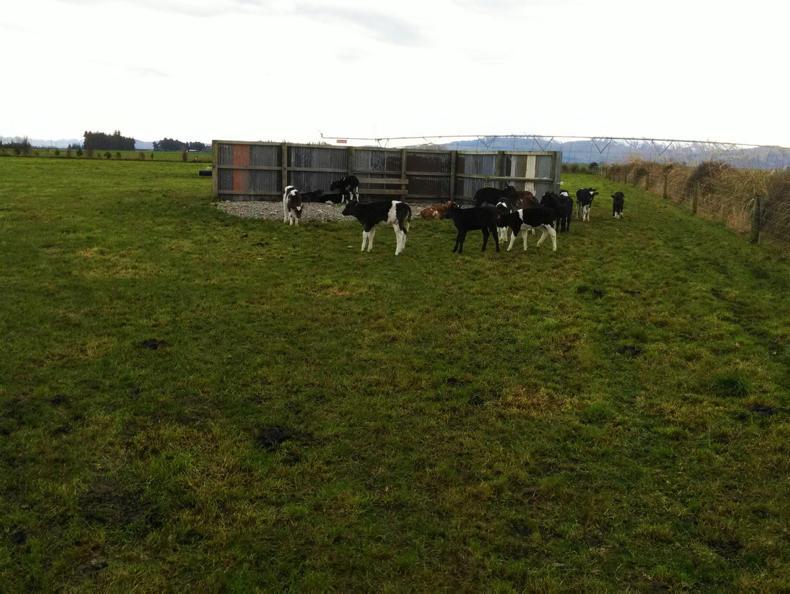
Our bus trip from the airport to Ashburton was a bit of a jaw-dropping experience, seeing large herds of cows being strip-grazed through beet and kale, and sheep munching their way through turnips.
A few weeks after arrival there was severe rainfall, with 150mm of rain falling within 24 hours.
There was severe flooding around Ashburton, however within 48 hours all traces had disappeared, due to the highly permeable soil structure around Canterbury.
One farmer described the land as having a foot of topsoil followed by stone around here.
Even placing standards into the ground for fencing can be an ordeal at times, due to the stony texture of the soil.
One of the biggest differences has to be the lack of buildings on farms here. Most just have a milking shed along with a couple of lean-to calf houses for young calves.
With cows out-wintered down here, there are huge time savings to be made during the year – it used to take two hours a day to feed all the mobs of cows during the dry period.
There is also the labour benefit of having no slurry to be spread or cubicles to be cleaned.
During calving it was strange having a mob of 400 cows in a grass paddock calving down.
Cows were checked only twice a day, with little intervention required. Cows that needed assistance were brought up to the rotary where they were calved in a bail.
Calves were collected twice daily and more frequently in wet weather. They were matched to their dam with a neckband, with all calves tubed with 4l of colostrum and dropped off to the calf pens.
Every cow’s colostrum is tested at first milking using a Brix refractometer and only colostrum that had a Brix value over 22% (50g/litre IgG) is kept for stomach tubing.
Potassium sorbate is added to the colostrum straight after collection to help preserve it.
Bull calves are also stomach tubed and fed the same as heifers, until being sent off at a minimum of four days of age.
We had 80% of cows calve in four weeks and 100% calved in nine weeks this year.
All springing cows are put though the parlour each morning and drafted from the mob as they calved down.
Biggest differences working on farms here
On-farm, I couldn’t believe how hygienic the milking parlour is.
The walls and rails are scrubbed by hand after each milking, so it is always clean inside.
The farm motorbike is the best tool famers have down here; they use them for rounding up cows, grubbing thistles and even putting reels up while driving on them.
The motorbike saves a lot of time as it helps get tasks done, like putting up reels, a lot faster.
Another thing I noticed is how dependant the dairy industry in New Zealand is on foreign labour.
New Zealand has tried to develop the industry to be attractive for people, with many farms being so remote that they have built houses for staff to live in and this helps keep staff that come on working-holiday visas.
There were 10 different nationalities working at Kintore this spring.
This farm has a lot of work contracted out to other people who can specialise in each task, to ensure it is given the time it deserves to complete it correctly.
It saves a lot of time for the farm workers to manage the grass and irrigation.
Cows enter covers of 1,300kg DM/ha (2,800 on NZ system) and consistently graze down to 100kg DM/ha - (1,500kgDM/ha in NZ).
If a paddock has to be cleaned off by the cows it is only done after evening milking, as there is a sufficient time span for the cows to get fresh grass after to maintain milk yield.
Main knowledge gained
At Kintore I have learned a lot about people management and development. The farm has a logo displayed on arrival at the farm with a powerful meaning: “Kintore Farm – Powered by People.”
The idea behind the motto is you need the right people on your team for it to be successful, be it farm workers, contractors, suppliers and advisers, etc.
At Kintore there are 10 full-time staff members along with seasonal staff members.
Kintore does well because it goes the extra mile to record, learn and improve its systems, with every team member instrumental to that.
Barbecues are a regular occurrence on farms down here, they help staff to bond and have a good yarn after a week’s work.
The farm owner, Nick Hoogeveen, places huge importance on the need for personal development and progression through the industry. He has staff members signed up to various courses and programmes.
Propagate is a new programme here in New Zealand, the main aim of which is to upskill farm workers by providing regular performance appraisals and giving them the necessary opportunities and constructive feedback to help them progress.
This is a very good idea as it promotes the staff to be ambitious on-farm.
Even during the middle of calving everyone downed tools for a few hours to have a staff meeting, hosted by Dairy NZ.
They facilitate a programme called FARMTUNE, which aims to develop individual protocols for each farm to address inefficiencies on-farm.
There are several laminated sheets around the parlour with protocols on how to deal with various situations, such as the plant wash and mastitis and sick cows, so everything is recorded and helps deliver consistent results. Having this meeting in the middle of calving was a very good idea, as it allowed us to put pen to paper while everything was still fresh in our heads.
It allowed us to come up with new ideas for the rest of the calving season and plan for next year as well. FARMTUNE helps take pressure off management by upskilling staff, so they can carry out more tasks and do so independently.
It also identified areas where double-jobbing could be reduced to increase efficiency.
With so many people employed, it’s vital to have successful tools in place for communication between everyone to ensure everything runs smoothly.
Everyone on-farm is connected on various group messenger chats, so that everyone can be made aware of a particular task to be completed or to be made aware of a particular hazard, etc.
An app called Tsheets is used for staff to clock in and out of work. This is a very efficient way of signing into work and the times worked are automatically sent into the office.
While another app called OnSide is used as a risk assessment document on the phone. It’s a very good app to have and all staff and visitors must download and view all the hazards on-farm before entering.
The app shows photos of all the risks on the farm and their locations are pin-pointed on the app, which is very useful for visitors to the farm.
I found that it was important to be alert at all times.
The first morning on the job we were driving through the dairy support block, where there were 12 different bunches of cows and heifers owned by different farms, so it was important when moving stock that there was no chance of herds mixing.
The ability to plan the timing of each task to minimise down time is also important.
Is the experience what I thought it would be when I left Ireland?
I couldn’t believe how much focus is given towards animal welfare on farms in New Zealand.
Cows are body condition scored regularly and any cow not seen to be thriving on beet during winter was removed off the crop, put onto grass paddocks and fed silage to improve condition.
Even every calf is naval sprayed with iodine three times to prevent infections: at pick up from paddock, at drop off to the lean-to calf pens and straight after stomach tubing.
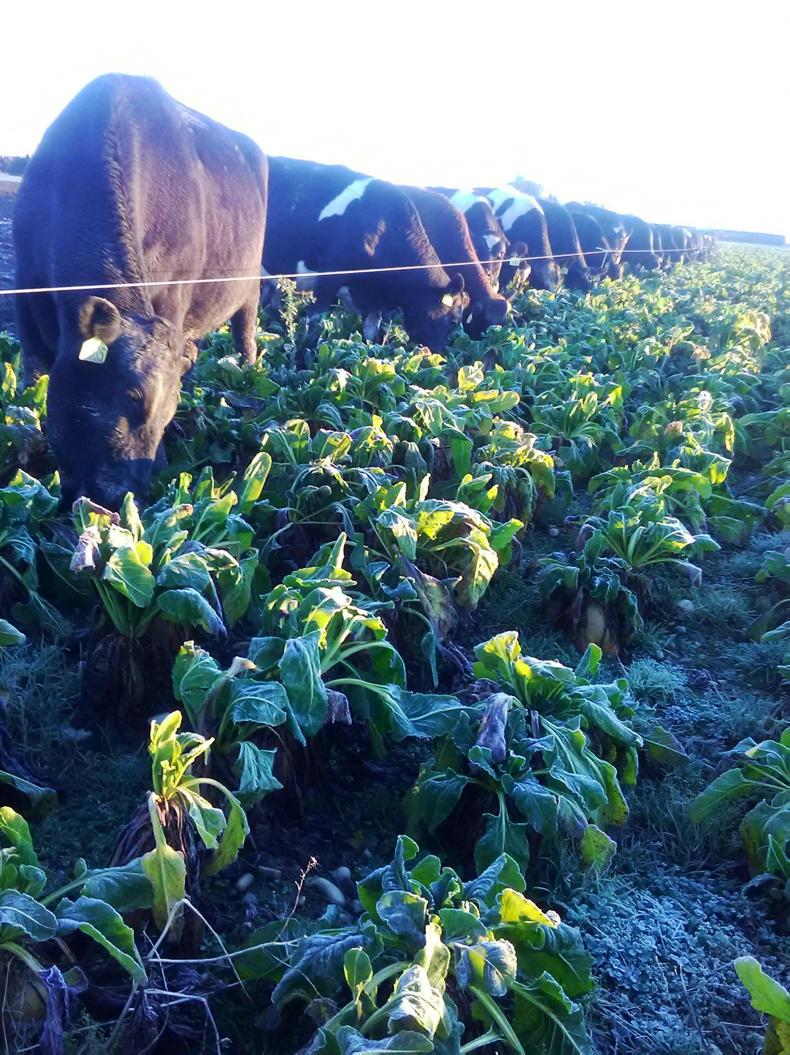
The vets also play a huge role on-farm. They administer sedative to all calves before they are dehorned in the calf pens, with no dehorning crate required.
At the end of last season the vets also administered the teat sealers to the cows and in-calf heifers.
During calving I couldn’t get over the fact that no one checked the cows from 9pm until 6.30am, when we went out for the first pick-up of calves.
During calving the vet came out every two weeks to Metricheck all cows calved more than 10 days and any cow with an infection was treated immediately.
All cows were rechecked on week eight of calving and one week prior to the start of mating, to give each cow plenty of time to start cycling again.
From an environmental perspective, Kintore Farm Ltd. places huge importance on minimising the need for irrigation by having systems in place that constantly monitor soil water at various depths, so the minimum amount of water will be applied to maintain field capacity.
They also incorporate chicory into the sward as the plant has a deep tap root, which is important for pulling water from the soil up to the surface for the shallower grass roots.
In the last few years the farm has planted several hundred meters of native trees, to aid biosecurity and help reduce the impact of winds drying up the soil.
The farm also has several bee hives around the farm. The bees are crucial in maximising pollination of clover and herbs sown in the pasture with the ryegrass.
The honey is collected by a local company who sell it at retail outlets in New Zealand
Would I encourage others to apply?
Like many other young farmers I always contemplated coming to New Zealand to experience dairy farming down here, but never set about it.
I chanced applying for the Stephen Cullinan scholarship in May and was successful in getting offered a place on the trip.
Coming to New Zealand has been a real eye-opening experience.
In particular, I have witnessed how it is possible to manage a large-scale dairy farm, which has developed a system so that everyone employed there has a decent quality of life, with regular downtime in the evening along with rostered days off.
Also having contact with New Zealand Dairy Careers on arrival has been a huge asset.
They played a huge role organising top-class farmers for us to learn off, along with providing key information on applying for visas, tax numbers, etc.
I think it’s vital for anyone thinking of pursuing a career in agriculture to get out and travel, be it to New Zealand or another country, or participate in a active discussion group.
I think it’s a phenomenal way to learn about new technologies and ways of running simple, profitable systems of production.
Read more
Student blog: simplicity in New Zealand dairying
Student Blog: dairying and low-nitrogen bulls
I am currently working at Kintore farm, based in Carew, 18 miles south of Ashburton in Canterbury.
Kintore Farm Ltd. owns 1,500 spring-calving, kiwi-cross cows, split between two farms which are across the road from each other. One unit has 700 cows and the other has 800 cows.
I work on the 700-cow herd farm named Katoa, where the cows are milked through a 60-unit Waikato rotary.
The parlour has automatic drafting, auto teat sprayers and cluster removers, along with a heat detection camera.
The feeding system in the parlour can deliver two different feeds, along with molasses at the same time.

Stephen O'Keefe Stephen O’Keeffe
Staff
There are three full-time staff members working at Katoa, along with a student for the calving period.
Specialised calf-rearers are contracted in to feed calves from birth to weaning.
A local person is also contracted in to do the fertiliser and other tractor work using Kintore’s machinery when required, so as to free up time for the staff to focus on looking after the cows.
Farm statistics
The farm is 212ha in size, with 10ha sown with fodder beet.
The beet is used as a supplementary feed close to drying off in the winter and as a winter forage. The farm operates at a stocking rate of 3.46 cows/ha.
The herd produced 5,120 litres, with fat at 5.17% and protein of 3.96% – a total of 526kg of milk solids per cow last season from 700kg of supplementary feed in the form of wheat, palm kernel extract, peas, molasses, maize silage and fodder beet.

Cows and young stock are wintered on a dairy support block. This land block was purchased recently in conjunction with a few other local farmers.
Cows and replacements are wintered here on a diet of beet or kale, with grass and oat silage also available.
Allocations of the crops are done using a drone that measures the area of crop, and using crop analysis an accurate break size is calculated to ensure the right amount of beet is fed daily.
Heifer calves
Heifer calves leave the milking platform after weaning and go to the dairy support block, where they will remain until two weeks prior to calving.
There is a farmer employed between the various shareowners of the support block and he manages the heifers until they leave the farm.
Second-lactation and any cows at risk of getting metabolic disorders are wintered on kale.
The thinking behind this is that cows lose teeth between two and three years of age, and eating beet can cause problems to the gums and emerging teeth, potentially restricting dry matter intakes.
During calving everyone was rostered onto a six-one roster, where you worked six days and had one off to recharge the batteries.
Near the end of calving we resumed our normal roster of seven-two-seven-three, where you work for seven days and get either two or three days off.
Day-to-day
A normal day starts at 4.15am, with cups on at 4.45am and 1.45pm, with two hours taken off for lunch between milkings.
Most days we aim to be heading home by 4.30pm every evening, while we take turns in shifting cows to a new break of grass in the evening, if it’s required.
Is the New Zealand industry different from Ireland?
After flying over the snow-covered Southern Alps at the end of June, we weren’t too sure what to expect on arrival.
Just before arrival at Christchurch we got a glimpse of what New Zealand was all about – big square paddocks and even a few milking platforms in the shape of circles and a milking parlour in the centre.

Our bus trip from the airport to Ashburton was a bit of a jaw-dropping experience, seeing large herds of cows being strip-grazed through beet and kale, and sheep munching their way through turnips.
A few weeks after arrival there was severe rainfall, with 150mm of rain falling within 24 hours.
There was severe flooding around Ashburton, however within 48 hours all traces had disappeared, due to the highly permeable soil structure around Canterbury.
One farmer described the land as having a foot of topsoil followed by stone around here.
Even placing standards into the ground for fencing can be an ordeal at times, due to the stony texture of the soil.
One of the biggest differences has to be the lack of buildings on farms here. Most just have a milking shed along with a couple of lean-to calf houses for young calves.
With cows out-wintered down here, there are huge time savings to be made during the year – it used to take two hours a day to feed all the mobs of cows during the dry period.
There is also the labour benefit of having no slurry to be spread or cubicles to be cleaned.
During calving it was strange having a mob of 400 cows in a grass paddock calving down.
Cows were checked only twice a day, with little intervention required. Cows that needed assistance were brought up to the rotary where they were calved in a bail.
Calves were collected twice daily and more frequently in wet weather. They were matched to their dam with a neckband, with all calves tubed with 4l of colostrum and dropped off to the calf pens.
Every cow’s colostrum is tested at first milking using a Brix refractometer and only colostrum that had a Brix value over 22% (50g/litre IgG) is kept for stomach tubing.
Potassium sorbate is added to the colostrum straight after collection to help preserve it.
Bull calves are also stomach tubed and fed the same as heifers, until being sent off at a minimum of four days of age.
We had 80% of cows calve in four weeks and 100% calved in nine weeks this year.
All springing cows are put though the parlour each morning and drafted from the mob as they calved down.
Biggest differences working on farms here
On-farm, I couldn’t believe how hygienic the milking parlour is.
The walls and rails are scrubbed by hand after each milking, so it is always clean inside.
The farm motorbike is the best tool famers have down here; they use them for rounding up cows, grubbing thistles and even putting reels up while driving on them.
The motorbike saves a lot of time as it helps get tasks done, like putting up reels, a lot faster.
Another thing I noticed is how dependant the dairy industry in New Zealand is on foreign labour.
New Zealand has tried to develop the industry to be attractive for people, with many farms being so remote that they have built houses for staff to live in and this helps keep staff that come on working-holiday visas.
There were 10 different nationalities working at Kintore this spring.
This farm has a lot of work contracted out to other people who can specialise in each task, to ensure it is given the time it deserves to complete it correctly.
It saves a lot of time for the farm workers to manage the grass and irrigation.
Cows enter covers of 1,300kg DM/ha (2,800 on NZ system) and consistently graze down to 100kg DM/ha - (1,500kgDM/ha in NZ).
If a paddock has to be cleaned off by the cows it is only done after evening milking, as there is a sufficient time span for the cows to get fresh grass after to maintain milk yield.
Main knowledge gained
At Kintore I have learned a lot about people management and development. The farm has a logo displayed on arrival at the farm with a powerful meaning: “Kintore Farm – Powered by People.”
The idea behind the motto is you need the right people on your team for it to be successful, be it farm workers, contractors, suppliers and advisers, etc.
At Kintore there are 10 full-time staff members along with seasonal staff members.
Kintore does well because it goes the extra mile to record, learn and improve its systems, with every team member instrumental to that.
Barbecues are a regular occurrence on farms down here, they help staff to bond and have a good yarn after a week’s work.
The farm owner, Nick Hoogeveen, places huge importance on the need for personal development and progression through the industry. He has staff members signed up to various courses and programmes.
Propagate is a new programme here in New Zealand, the main aim of which is to upskill farm workers by providing regular performance appraisals and giving them the necessary opportunities and constructive feedback to help them progress.
This is a very good idea as it promotes the staff to be ambitious on-farm.
Even during the middle of calving everyone downed tools for a few hours to have a staff meeting, hosted by Dairy NZ.
They facilitate a programme called FARMTUNE, which aims to develop individual protocols for each farm to address inefficiencies on-farm.
There are several laminated sheets around the parlour with protocols on how to deal with various situations, such as the plant wash and mastitis and sick cows, so everything is recorded and helps deliver consistent results. Having this meeting in the middle of calving was a very good idea, as it allowed us to put pen to paper while everything was still fresh in our heads.
It allowed us to come up with new ideas for the rest of the calving season and plan for next year as well. FARMTUNE helps take pressure off management by upskilling staff, so they can carry out more tasks and do so independently.
It also identified areas where double-jobbing could be reduced to increase efficiency.
With so many people employed, it’s vital to have successful tools in place for communication between everyone to ensure everything runs smoothly.
Everyone on-farm is connected on various group messenger chats, so that everyone can be made aware of a particular task to be completed or to be made aware of a particular hazard, etc.
An app called Tsheets is used for staff to clock in and out of work. This is a very efficient way of signing into work and the times worked are automatically sent into the office.
While another app called OnSide is used as a risk assessment document on the phone. It’s a very good app to have and all staff and visitors must download and view all the hazards on-farm before entering.
The app shows photos of all the risks on the farm and their locations are pin-pointed on the app, which is very useful for visitors to the farm.
I found that it was important to be alert at all times.
The first morning on the job we were driving through the dairy support block, where there were 12 different bunches of cows and heifers owned by different farms, so it was important when moving stock that there was no chance of herds mixing.
The ability to plan the timing of each task to minimise down time is also important.
Is the experience what I thought it would be when I left Ireland?
I couldn’t believe how much focus is given towards animal welfare on farms in New Zealand.
Cows are body condition scored regularly and any cow not seen to be thriving on beet during winter was removed off the crop, put onto grass paddocks and fed silage to improve condition.
Even every calf is naval sprayed with iodine three times to prevent infections: at pick up from paddock, at drop off to the lean-to calf pens and straight after stomach tubing.

The vets also play a huge role on-farm. They administer sedative to all calves before they are dehorned in the calf pens, with no dehorning crate required.
At the end of last season the vets also administered the teat sealers to the cows and in-calf heifers.
During calving I couldn’t get over the fact that no one checked the cows from 9pm until 6.30am, when we went out for the first pick-up of calves.
During calving the vet came out every two weeks to Metricheck all cows calved more than 10 days and any cow with an infection was treated immediately.
All cows were rechecked on week eight of calving and one week prior to the start of mating, to give each cow plenty of time to start cycling again.
From an environmental perspective, Kintore Farm Ltd. places huge importance on minimising the need for irrigation by having systems in place that constantly monitor soil water at various depths, so the minimum amount of water will be applied to maintain field capacity.
They also incorporate chicory into the sward as the plant has a deep tap root, which is important for pulling water from the soil up to the surface for the shallower grass roots.
In the last few years the farm has planted several hundred meters of native trees, to aid biosecurity and help reduce the impact of winds drying up the soil.
The farm also has several bee hives around the farm. The bees are crucial in maximising pollination of clover and herbs sown in the pasture with the ryegrass.
The honey is collected by a local company who sell it at retail outlets in New Zealand
Would I encourage others to apply?
Like many other young farmers I always contemplated coming to New Zealand to experience dairy farming down here, but never set about it.
I chanced applying for the Stephen Cullinan scholarship in May and was successful in getting offered a place on the trip.
Coming to New Zealand has been a real eye-opening experience.
In particular, I have witnessed how it is possible to manage a large-scale dairy farm, which has developed a system so that everyone employed there has a decent quality of life, with regular downtime in the evening along with rostered days off.
Also having contact with New Zealand Dairy Careers on arrival has been a huge asset.
They played a huge role organising top-class farmers for us to learn off, along with providing key information on applying for visas, tax numbers, etc.
I think it’s vital for anyone thinking of pursuing a career in agriculture to get out and travel, be it to New Zealand or another country, or participate in a active discussion group.
I think it’s a phenomenal way to learn about new technologies and ways of running simple, profitable systems of production.
Read more
Student blog: simplicity in New Zealand dairying
Student Blog: dairying and low-nitrogen bulls





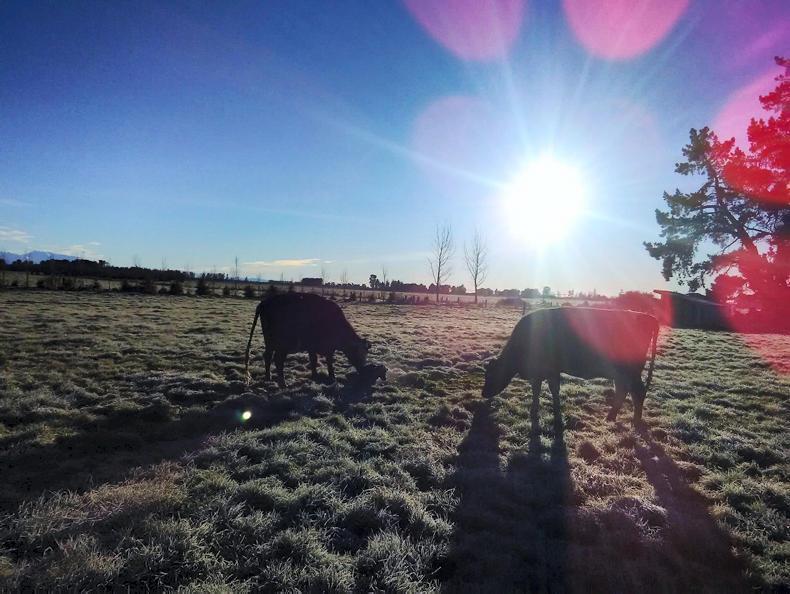




 This is a subscriber-only article
This is a subscriber-only article













SHARING OPTIONS: